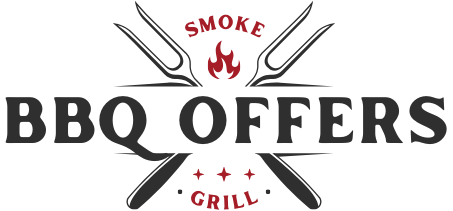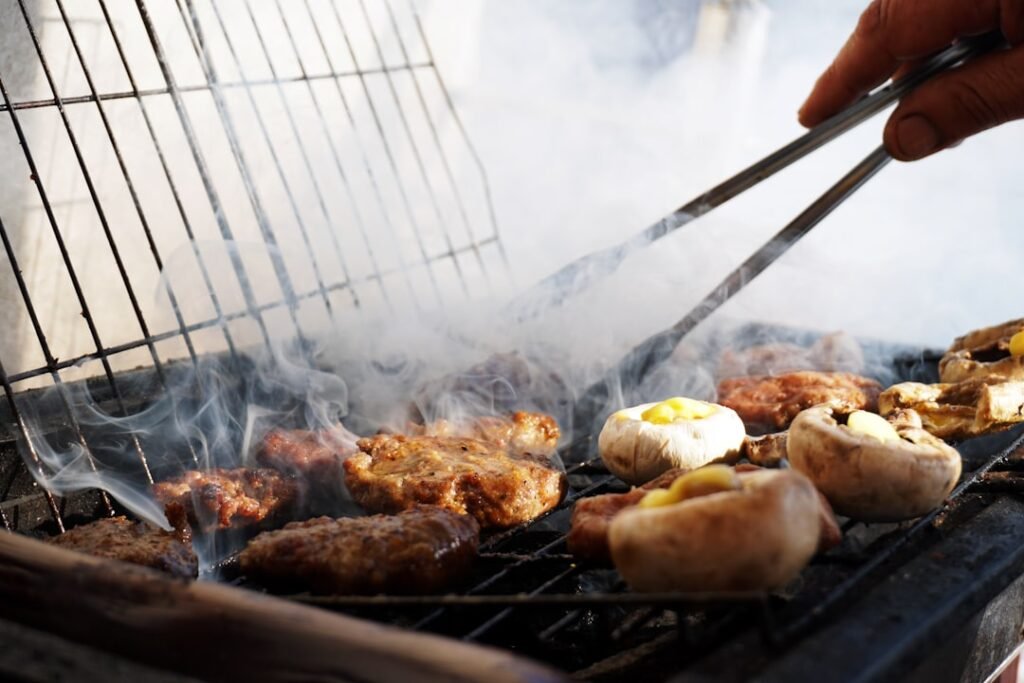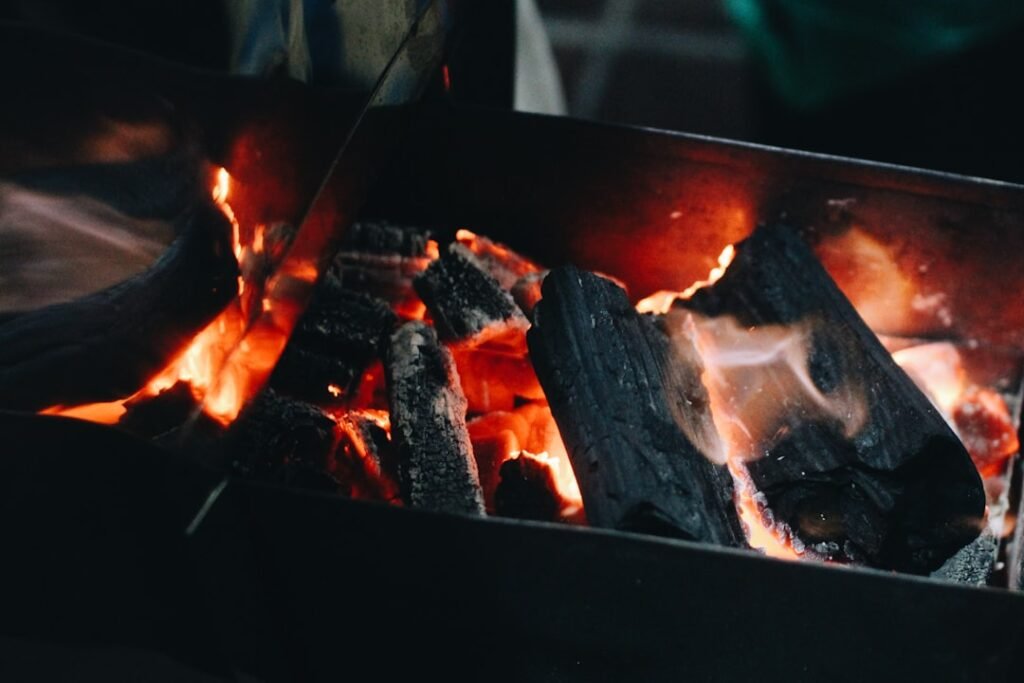Exploring the Different Types of BBQ

Barbecue, often affectionately referred to as BBQ, is more than just a method of cooking; it is a cultural phenomenon that brings people together, ignites passion, and celebrates flavors. The very act of barbecuing evokes images of warm summer evenings, the tantalizing aroma of meat sizzling over an open flame, and the laughter of friends and family gathered around a grill. For many, BBQ is a cherished tradition that transcends generations, with recipes and techniques passed down through families, each adding their unique twist to the craft.
It is a culinary art form that invites creativity and experimentation, allowing individuals to express their personal tastes while honoring regional influences. The roots of BBQ can be traced back to ancient cooking methods, where meat was slow-cooked over an open fire or buried in hot coals. Over time, this practice evolved into the diverse styles we see today, each with its own distinct flavors and techniques.
Whether it’s the smoky richness of Texas brisket or the tangy sweetness of Carolina pulled pork, BBQ has become a beloved staple in many cultures around the world. As I delve deeper into the world of BBQ, I find myself captivated by its history, its regional variations, and the communal spirit it fosters among those who partake in this delicious culinary journey.
Regional BBQ Styles
As I explore the vast landscape of BBQ styles, I am struck by the rich tapestry of flavors and techniques that vary from region to region. In the United States alone, BBQ is a source of regional pride, with each area boasting its own unique approach. For instance, Texas BBQ is renowned for its emphasis on beef, particularly brisket that is smoked low and slow until it reaches a tender perfection.
The use of post oak wood adds a distinct flavor that is synonymous with this style. In contrast, Kansas City BBQ is characterized by its diverse offerings, including pork ribs and burnt ends, all slathered in a thick, sweet tomato-based sauce that has become a hallmark of the region. Traveling further south to the Carolinas, I discover a different world of BBQ altogether.
Here, pulled pork reigns supreme, often cooked with a vinegar-based sauce that highlights the natural flavors of the meat. Eastern North Carolina BBQ is particularly famous for its whole-hog cooking method, where the entire pig is smoked and served with a tangy vinegar sauce that cuts through the richness of the meat. Meanwhile, in South Carolina, I find a unique mustard-based sauce that adds a zesty twist to the traditional BBQ experience.
Each region tells its own story through its BBQ style, reflecting local ingredients, cultural influences, and historical traditions that have shaped the way we enjoy this beloved cuisine.
As I delve deeper into the world of BBQ, I find myself pondering the differences between grilling and smoking—two techniques that are often conflated but are distinct in their methods and outcomes. Grilling typically involves cooking food quickly over high heat, often directly over an open flame or hot coals. This method is perfect for searing meats and vegetables, creating a delicious char while locking in juices.
The quick cooking time allows for a variety of foods to be prepared in a short span, making grilling an ideal choice for weeknight dinners or impromptu gatherings with friends. On the other hand, smoking is a slow and deliberate process that requires patience and skill. It involves cooking food at lower temperatures over an extended period, allowing smoke from wood chips or chunks to infuse the meat with rich flavors.
The result is tender, flavorful dishes that are often celebrated for their depth and complexity. As I experiment with both techniques in my own backyard, I appreciate how each method brings out different qualities in the food. Grilling offers immediate gratification with its quick results, while smoking rewards me with an intricate dance of flavors that can only be achieved through time and care.
Types of BBQ Equipment

When it comes to BBQ, having the right equipment can make all the difference in achieving mouthwatering results. As I navigate through various options available on the market, I realize that there are several types of grills and smokers to consider, each catering to different preferences and cooking styles. Charcoal grills are a classic choice for many BBQ enthusiasts; they provide an authentic smoky flavor that is hard to replicate with gas.
The process of lighting charcoal and managing the heat can be an art form in itself, but for those who appreciate traditional methods, it’s well worth the effort. Gas grills offer convenience and ease of use, allowing me to fire up my grill with just the turn of a knob. They heat up quickly and provide consistent temperatures, making them ideal for those who want to enjoy BBQ without the fuss of charcoal.
For those who are serious about smoking meats, dedicated smokers come in various forms—offset smokers, vertical smokers, and pellet grills—each designed to maintain low temperatures while allowing smoke to circulate around the food. As I explore these options, I find myself drawn to the versatility of pellet grills; they combine the convenience of gas with the flavor of wood smoke, making them an appealing choice for both grilling and smoking.
BBQ Sauces and Rubs
| Product | Price | Sales Volume | Customer Ratings |
|---|---|---|---|
| BBQ Sauce A | 8.99 | 500 units | 4.5/5 |
| BBQ Sauce B | 7.49 | 700 units | 4.2/5 |
| BBQ Rub A | 6.99 | 300 units | 4.7/5 |
| BBQ Rub B | 5.99 | 400 units | 4.4/5 |
No discussion about BBQ would be complete without delving into the world of sauces and rubs—essential components that elevate dishes from ordinary to extraordinary. As I experiment with different flavor profiles, I discover that BBQ sauces can range from sweet to tangy to spicy, each adding its unique character to grilled or smoked meats. For instance, Kansas City-style sauce is thick and sweetened with molasses or brown sugar, while vinegar-based sauces from North Carolina offer a sharp tang that cuts through rich pork dishes.
Rubs are another crucial element in BBQ preparation; they consist of a blend of spices and herbs that are generously applied to meat before cooking. A good rub can enhance the natural flavors of the meat while creating a delicious crust during cooking. As I mix my own rubs at home, I enjoy experimenting with various combinations—smoked paprika for depth, brown sugar for sweetness, and cayenne pepper for heat.
The beauty of sauces and rubs lies in their versatility; they can be tailored to suit individual tastes or regional preferences, allowing me to put my personal stamp on every BBQ dish I create.
Vegetarian and Vegan BBQ Options
While BBQ is often associated with meat-centric dishes, I have discovered an exciting world of vegetarian and vegan options that can hold their own on any grill or smoker. As more people embrace plant-based diets or simply seek to incorporate more vegetables into their meals, creative alternatives have emerged that showcase the versatility of grilling beyond traditional meats. Grilled vegetables such as zucchini, bell peppers, and corn can be transformed into flavorful dishes when marinated and cooked over an open flame.
To take it a step further, I have experimented with plant-based proteins like tempeh and tofu. When marinated properly and grilled to perfection, these ingredients can absorb flavors beautifully while providing satisfying textures. Additionally, there are now many innovative products on the market designed specifically for vegans—such as plant-based sausages and burgers—that mimic traditional BBQ fare without compromising on taste or experience.
As I explore these options at my gatherings, I find that they not only cater to diverse dietary preferences but also introduce new flavors that everyone can enjoy.
Tips for Perfect BBQ

Achieving perfect BBQ requires more than just good ingredients; it demands attention to detail and a few tried-and-true techniques that I have learned over time. One essential tip is to always preheat my grill or smoker before adding food; this ensures even cooking and helps prevent sticking. Additionally, maintaining consistent temperatures throughout the cooking process is crucial for achieving tender results—using a reliable thermometer allows me to monitor internal temperatures accurately.
Another important aspect is patience; great BBQ cannot be rushed. Whether smoking a brisket for hours or allowing ribs to cook low and slow, giving food ample time to develop flavors is key. I also find that resting meat after cooking allows juices to redistribute throughout the cut, resulting in a more succulent bite when it’s finally served.
Lastly, don’t forget about presentation! A well-plated dish not only looks appealing but also enhances the overall dining experience—garnishing with fresh herbs or serving alongside colorful sides can elevate any BBQ meal.
BBQ and Beer Pairings
As I savor my BBQ creations, I often find myself contemplating which beverages will best complement these rich flavors—and beer has become my go-to choice for pairing with grilled or smoked dishes. The wide variety of beer styles available allows me to experiment with different combinations that enhance both food and drink experiences. For instance, when enjoying smoky brisket or ribs slathered in sweet sauce, I gravitate towards a hoppy IPA; its bitterness cuts through richness while providing refreshing contrast.
On the other hand, lighter beers like wheat ales or lagers work beautifully with grilled vegetables or chicken dishes; their crispness complements delicate flavors without overpowering them. Dark beers such as stouts or porters can also be delightful companions for hearty meats like pulled pork or beef short ribs; their roasted notes echo those found in smoked dishes while adding depth to each bite. As I continue my journey through BBQ and beer pairings, I relish discovering new combinations that elevate my culinary adventures while celebrating the art of grilling and smoking in all its glory.






